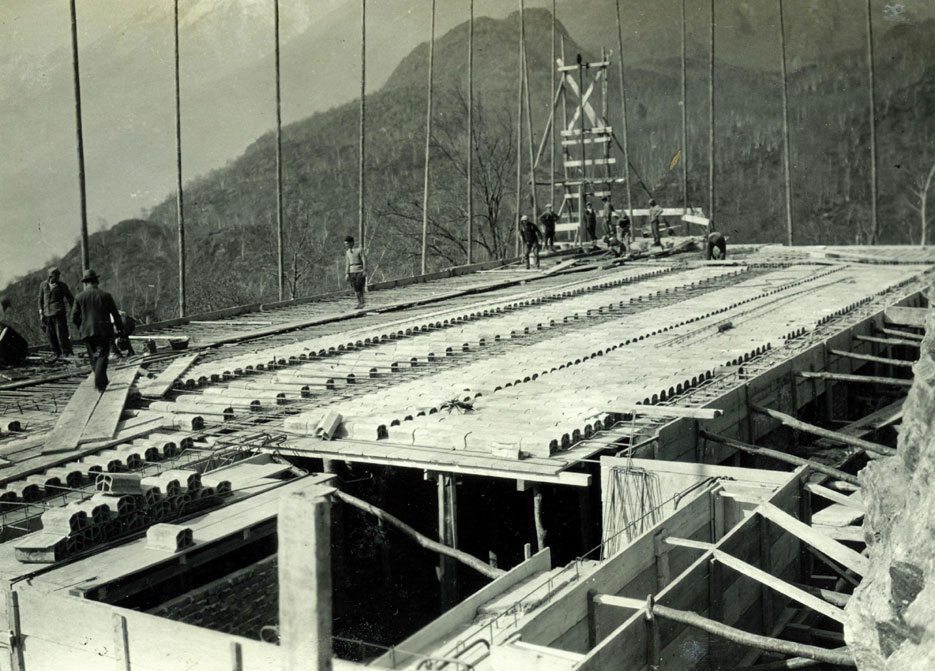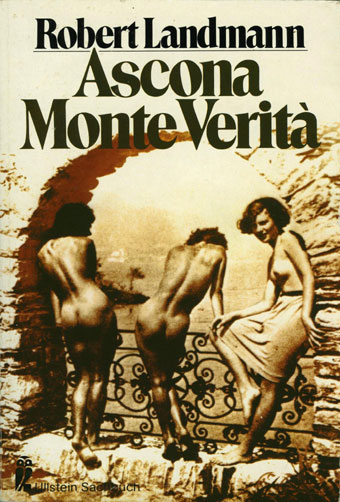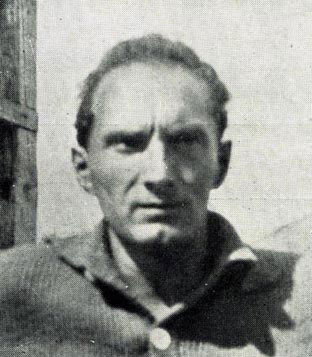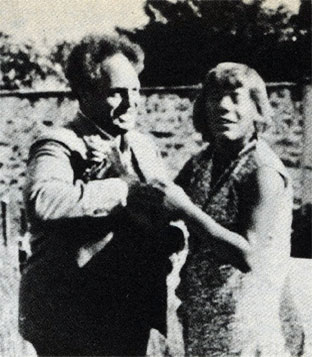« Buddha » von der Heydt
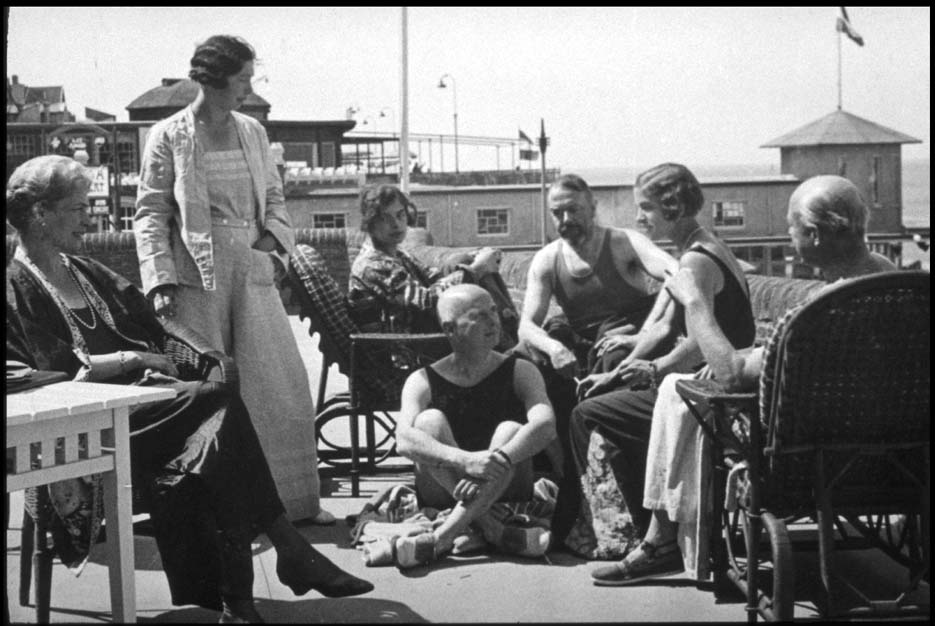
Eduard von der Heydt
(1882-1964) with the
Ratibor family (Herzog von Ratibor) on the terrace of his house
in Zandvoort, Holland, probably around or after 1926, - the year in
which he bought the Monte
Verita.
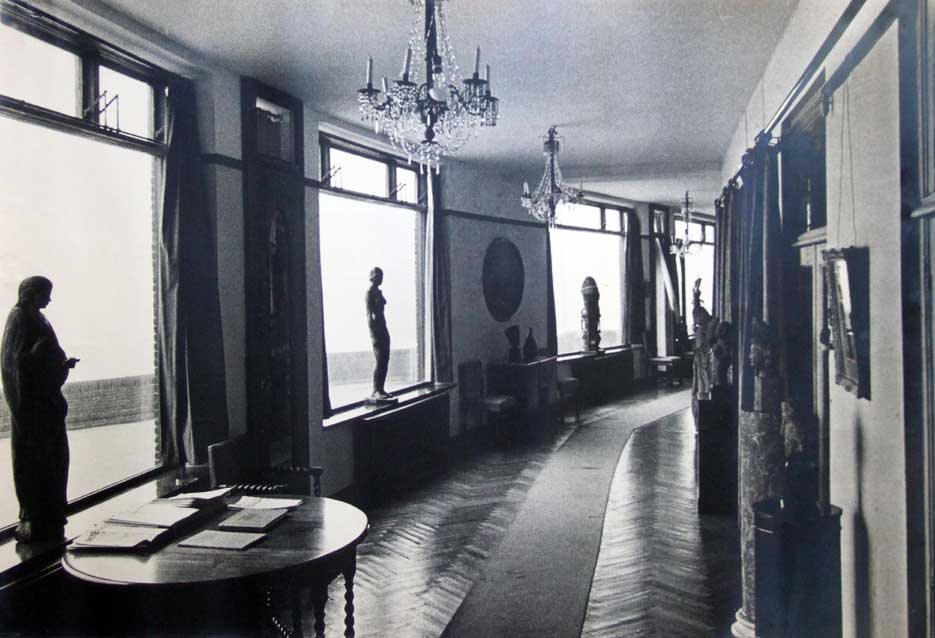
Inside view of the von der Heydt house in Zandvoort. This house was blasted by the
nazis during the 1939-45 war (World War II)
[Q : Was Eduard von der Heydt blackmailed by the
nazis ? What has happened to all these artworks ?]
The architecture of this house reveals the social nature of its
owner : the common space of the corridor is built
on the seaside, meaning that the view and the enjoyment of artworks is
for everyone, whereas the intimacy of private rooms
is on the landside (without any significant view). This architecture is
quite unique, as it is opposite to most,
if not all that can be observed about that kind of seaside houses.
Ref.: African, Asian (Buddhist) and European Art.
Monte Verità in the early Heydt Era
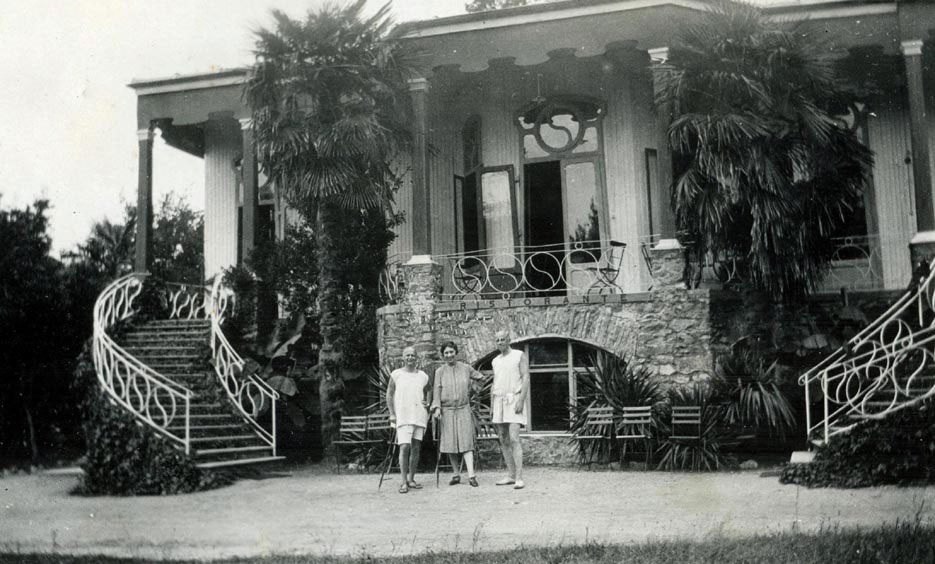
Monte Verità, August 1926: « The Henri Oedenkoven Taoist
Temple », still impressive, repainted and yet falling apart.
With Eduard and maybe (?) Vera von
der Heydt (born Vera von Schwabach 1899-1996).
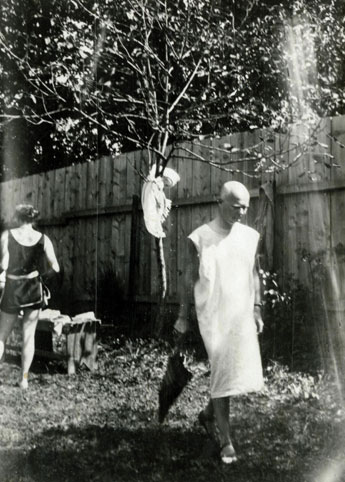
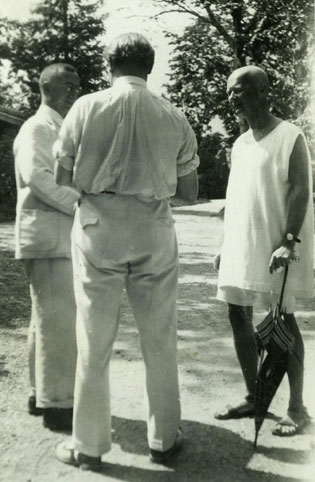
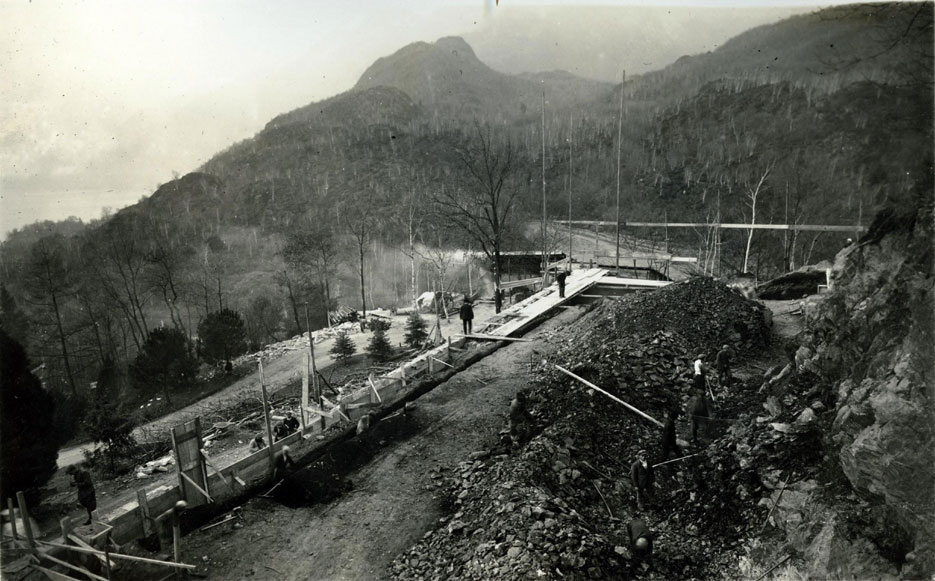
February 1929 : where are the trucks? In the back, one can see the Baladrüm.
March 1929 : avant-garde Bauhaus building techniques - and yet somewhat medieval in regard to our times.
You are welcome to
use all photos above for the sake of research on Monte Verità
mention the source : <ymago.net> if you want.
Ursula Guggenheim
von Wiese
About Old Rumors (quotation in german ~ 1973) :
“Seit
eh und je hat der Klatsch in Ascona üppige Bluten getrieben, und es ist
unmöglich, Dichtung und Wahrheit zu trennen. Die einen sagen, Heydt sei
Nazi gewesen, der zu Gunsten der braunen Herren in Deutschland in einen
grossangelegten Goldschmuggel verwickelt worden sei; die andern
bestreiten es glühend und weisen darauf hin, dass der Baron vielen
Emigranten geholfen und jüdischen Kindern Unterschlupf gewährt habe.
Vielleicht stimmt beides, jedenfalls lässt es sich denken, dass man
sich in jener Zeit in einer solchen Stellung nur halten konnte, wenn
man zumindest starke Konzessionen machte.” Ursula Guggenheim
von
Wiese unter Mitarbeit von Doris Hasenfratz, Ergänzung zur ersten
Neuauflage (1973) von: Robert Landmann, Ascona - Monte Verità. Auf der
Suche nach dem Paradies. Benziger, Zürich 1973; Ullstein, Frankfurt/M,
Berlin, Wien 1979, S. 241. Zweite Neuauflage (2000) mit Nachwort von
Martin Dreyfus: Huber, Frauenfeld 2000, S. 279-280.
(Probably quite reliable, as Ursula von Wiese and her husband
WernerJohannes Guggenheim lived in Ascona at that time.)
Though
Heydt lived in a very different context and was not directly involved
in WW2, his case bears some resemblance with Oskar Schindler :
on one hand, he tried to stay in good terms with the nazis (contacts
with Hermann Göring, and maybe - just as Schindler did :
German
Abwehr ?, i.e. Admiral Wilhelm Canaris ?) ;
on the other
hand, he helped jewish friends to escape nazi persecution and
accomodated numerous jewish children on the Monte Verità. Thus, the few
facts and lots of allegations about his activity in that time
(including « nazigold » e tutti quanti)
can be interpreted in many contradictory ways. As Ursula Guggenheim von
Wiese sums it up : « presumably one could hardly stay
in such
a position at that time without making large concessions ».
Two very different portraits of Eduard von der Heydt (in german) :
Eduard, der letzte Baron von der Heydt (von Marie-Luise Baum)
http://de.wikipedia.org/wiki/Eduard_von_der_Heydt
The Eduard von der Heydt Utopia
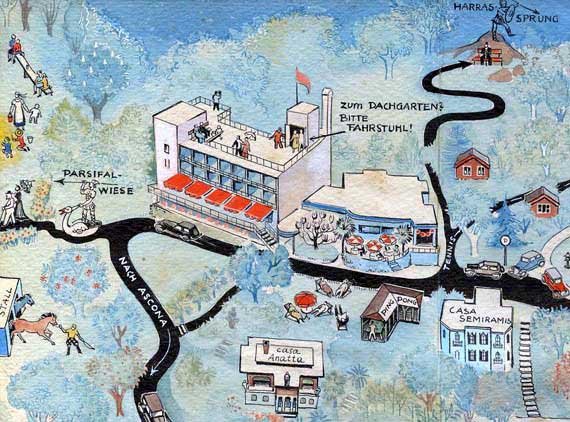
The « Eduard von der Heydt Utopia » lasted seven years
(1926-1933)
after 1933, things started to become problematic, as one may guess.
But the site has been preserved. Including the mysterious Casa Anatta
and further remains of « Monte Oedenkoven & Co »
(1900-1919)
hopefully offering space for new dreams of a better world.
*
Further Links :
Gustav Gräser & Co (c. 1900-1919)
Monte Verita Today :
Nice site with many pictures of Monte Verità :
http://www.fileane.com/laurie/laurie01/monte verita.htm
